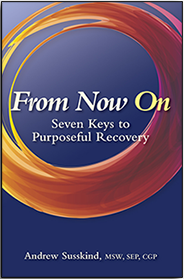In Part One we learned about a teenager named Charlie whose relationship with porn became his secret life. Now let’s take a look at a few action steps that Charlie might consider to develop a more satisfying and pleasurable sex life.
- Know that your brain and body need to recalibrate after years of viewing pornographic images. It will take up to a year to physiologically shift from images on a screen to a real person in front of you. Be patient and know that you’re exploring the unexplored part of you—your sexual self.
- If you experience erectile problems without the use of porn, speak to your physician or a sexual health professional who can walk you through some steps to get to know your body again. This process may take time but know that you have not done any permanent damage.
- Sex therapists and sex coaches are trained to focus on sexual health issues. Sex addiction therapists are trained to focus on compulsive sexual behaviors. Ideally, find someone who is certified in both areas. They are not always easy to find but it will be worth it to interview several candidates to find someone you feel you can discuss even the most sensitive and vulnerable areas of your sexuality. When sexual expression becomes secretive and shameful, it tends to only get worse without professional help. Find the very best support in your area or possibly on-line.
- With the help of your therapist, moderate your problematic porn behavior to see if it’s possible to decrease the amount and frequency of porn you’re consuming. If that doesn’t work, take more drastic measures such as asking a tech-savvy friend to block all porn sites on all of your devices.
- Once your porn sites are blocked, use your computer and phone for safe, productive uses. Join chat communities focusing on those who have a problematic relationship with porn. Read articles about the physiological and sexual effects related to excessive porn use. Find others who have stories of healing and hope.
- Consider twelve-step support if you and your therapist identify your issue as compulsive and persistent. Attend at least six different meetings in-person or on-line in order to find out which meetings resonate for you. You are biologically wired for connection, and 12-step communities provide a sense of belonging based on sharing a similar problem.
- Read books related to your problem. The Porn Trap by Larry and Wendy Maltz is a solid resource to consider, and my recent book It’s Not About the Sex also addresses the underlying issues you may be facing.
- Once your compulsivity has slowed down, ask your therapist to help you develop a Sexual Health Vision. What does sexual pleasure mean to you? What would feel more satisfying, fun and liberating? Allow plenty of time and soul searching to develop your vision of sexual health.
- Go to a men’s group with an emphasis on sexual health. You will find others who identify as being in recovery from various types of compulsive sexual behavior, and the focus will be about finding your true sexual voice and helping others do the same. Group therapy offers its members a powerful opportunity to build shame resiliency and camaraderie.
Sexual health is often overlooked, yet it’s just as significant as mental health, emotional health, physical health and spiritual health. Because puritanical ideas of sex are still pervasive in American culture and sometimes in the twelve-step rooms, exploring your sexual health is a courageous path of self-discovery as you find your true self beyond out of control sexual behaviors.




